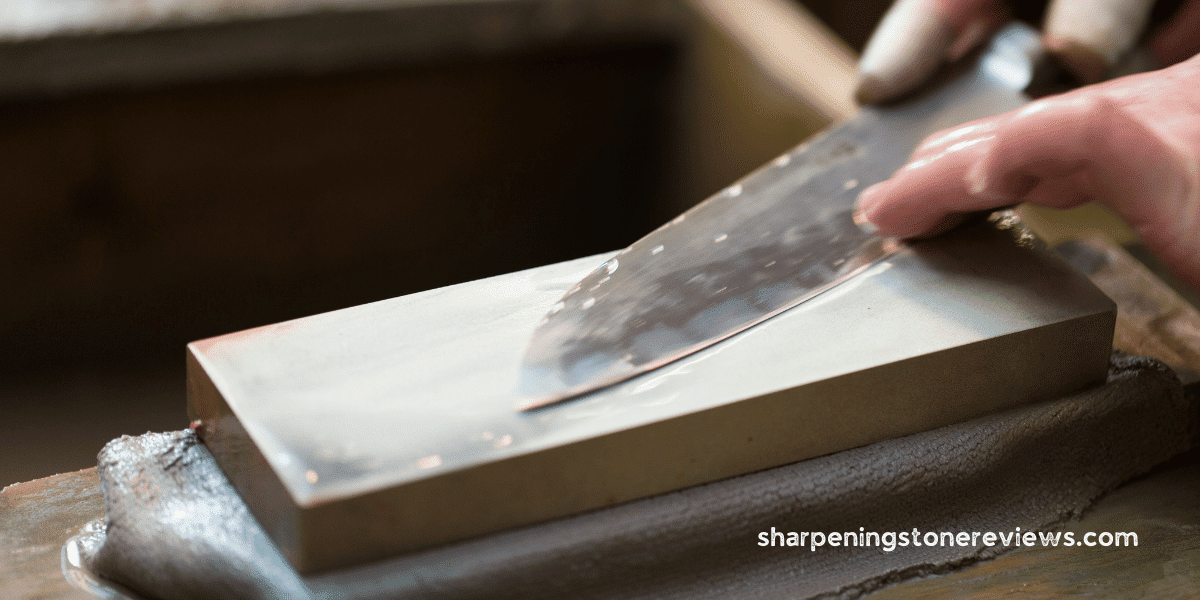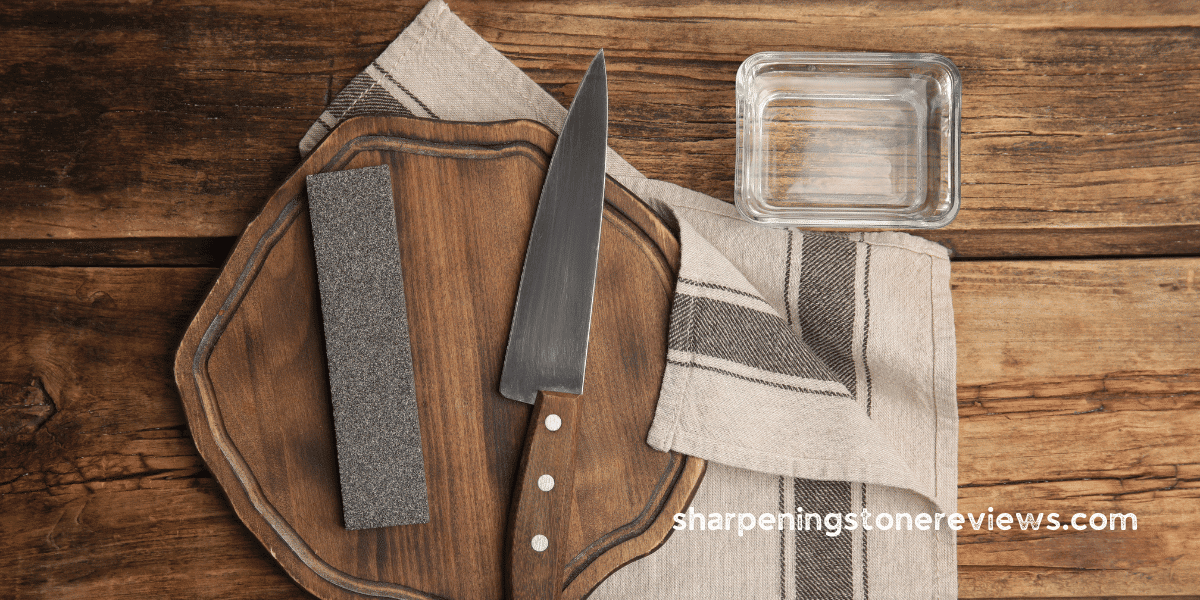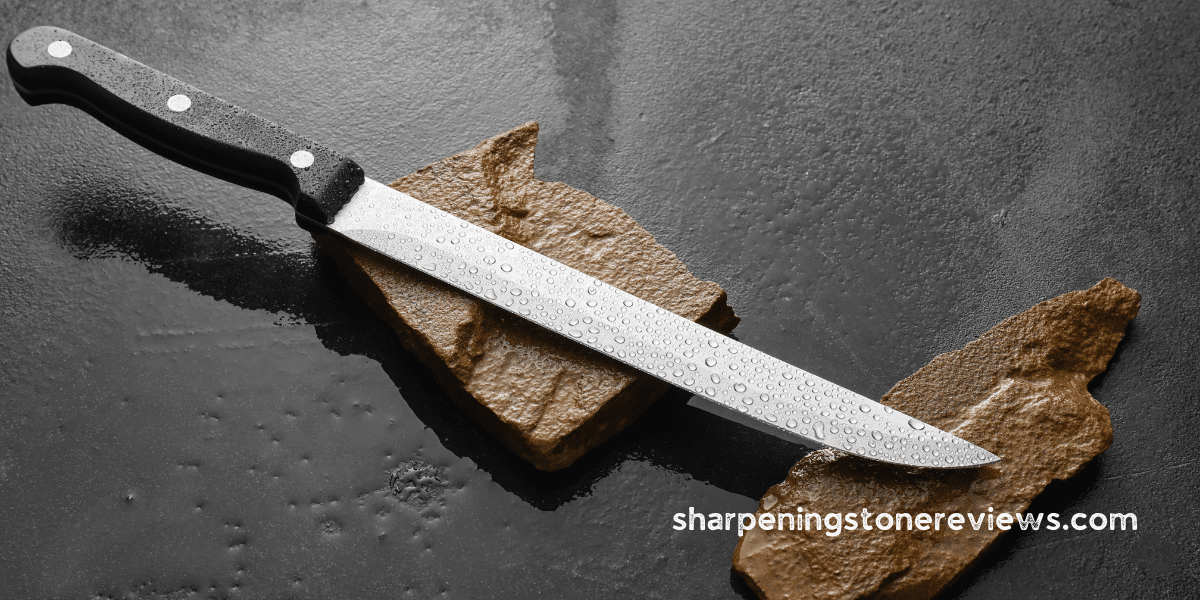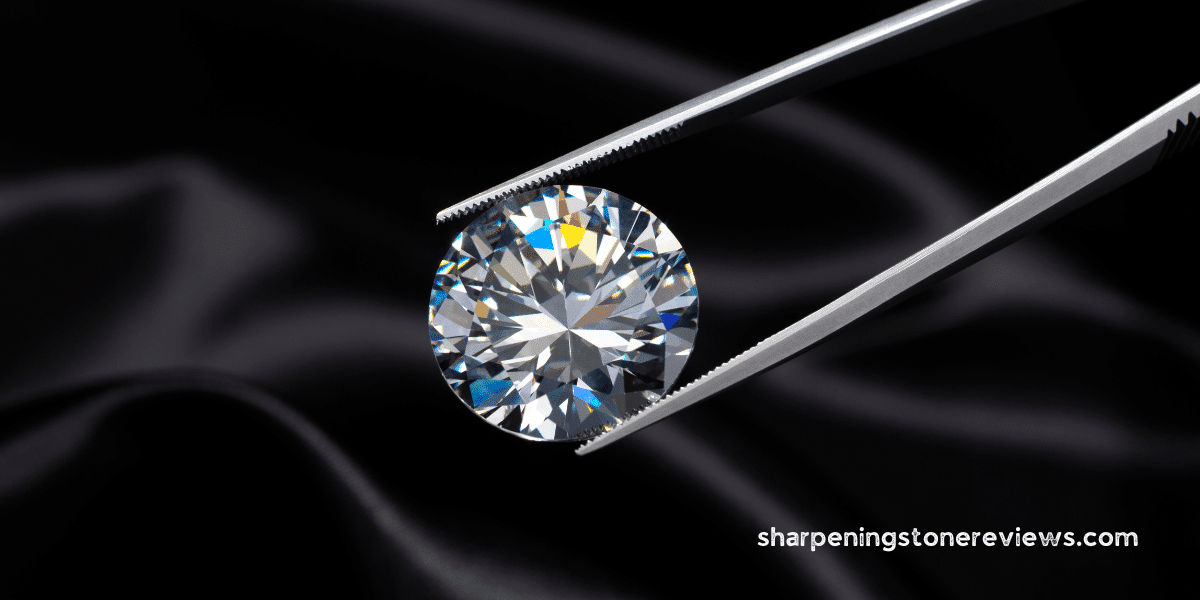There are a few key factors to consider to tell the difference between an oil and a water-sharpening stone. The surface texture of the stone can provide a clue. Oil stones tend to have a smoother texture, while water stones have a more porous and abrasive surface. Additionally, the color of the stone can be indicative of its type. Oil stones are typically darker in color, ranging from brown to black, while water stones are generally lighter in color, such as gray or white.
Another way to differentiate between the two types of stones is by examining the abrasive particles embedded in the stone. Oil stones typically have aluminum oxide or silicon carbide particles, which are coarser and more durable. Water stones, on the other hand, often contain softer particles like garnet or corundum, which are more easily worn down.
To confirm the type of stone, you can perform a simple test. If the stone is an oil stone, it will repel water and absorb oil. You can pour a small amount of water onto the stone’s surface and observe whether it beads up or is absorbed. If the stone is a water stone, it will absorb water readily. Conversely, if you pour a small amount of oil onto the stone, it will be absorbed.
By understanding these characteristics and performing the test, you can determine whether your sharpening stone is an oil stone or a water stone. Knowing this information will assist you in selecting the suitable stone for your sharpening requirements and guaranteeing that you obtain the best possible outcomes.
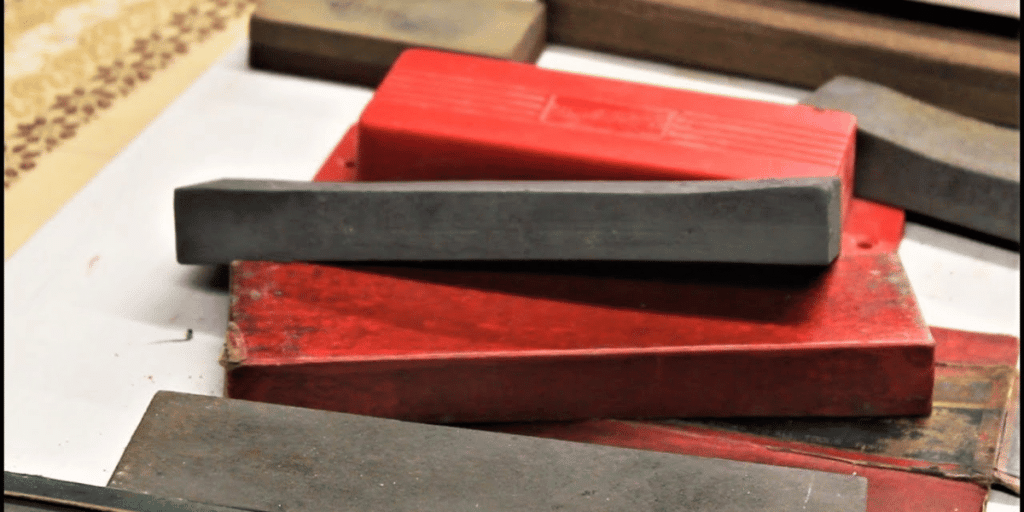
Types of Sharpening Stones
There are a few different types to choose from when it comes to sharpening stones. Waterstones are made from abrasive materials like aluminum oxide, silicon carbide, or Novaculite and are used with water. Oil stones, on the other hand, are made from aluminum oxide or silicon carbide and coated with oil. Waterstones typically have a wider range of grits and a faster sharpening speed compared to oil stones. Diamond stones are another option known for their longevity and durability. When deciding which type of stone to use, consider the material you’re sharpening, your budget, and how often you plan to use it. Knowing the type of stone, you have is crucial for proper maintenance and care.
Identifying an Oil Stone
To identify an oil stone, there are a few key characteristics to look for. First, check the packaging for any indications that the stone is oil-based. This information can usually be found on the label or product description.
Next, examine the surface of the stone. Oil stones typically have a porous and spongy texture, which helps with sharpening. You may also notice an oil coating on the stone’s surface. This oil coating is necessary for proper lubrication during sharpening.
Another way to identify an oil stone is to perform a simple water test. Place a few drops of water on the stone’s surface and observe how it behaves. If the water beads up and does not quickly absorb into the stone, it is likely an oil stone.
If you are still trying to figure out the type of stone you have, feel free to reach out to the manufacturer or seller for clarification. They should be able to provide you with the necessary information.
It’s essential to keep in mind that oil stones have their own set of advantages and disadvantages. While they may be slower and require more maintenance compared to water stones, they are generally more budget-friendly.
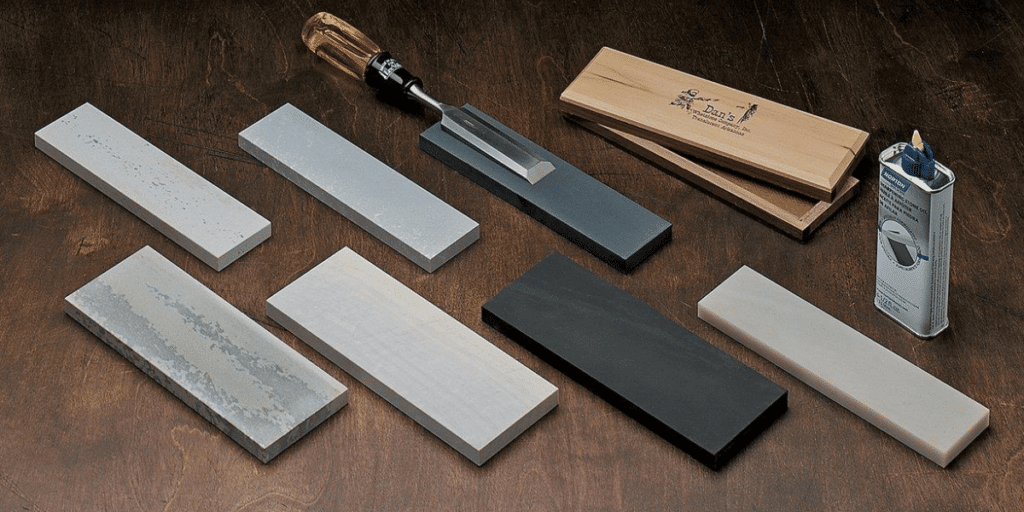
Recognizing a Water Stone
You can recognize a water stone by its smoother surface and even color throughout. It is made of abrasive material like aluminum oxide, silicon carbide, or Novaculite and is typically used with water. Water stones are harder than oil stones and are usually used in Japanese sharpening techniques. They also have a wider range of grits, from 200 to 8000. Natural stones, such as Arkansas stones, are also water stones.
| Feature | Water Stones | Oil Stones |
|---|---|---|
| Material | Abrasive | Aluminum oxide or silicon carbide |
| Grit Range | 200 – 8000 | 220 – 1000 |
| Speed | Faster | Slower |
| Maintenance | Soak in water | Oiling |
Examining the Surface Texture
When examining the stone’s surface texture, you can differentiate between oil and water stones. Whetstones used for sharpening knives and other tools with water have a rougher texture than oil stones, which tend to be smoother. If you run your finger across the stone’s surface, you should be able to feel the difference.
Water stones will also have an even color throughout, while oil stones may have swirls, lines, or patches of different colors. Water stones will also have a few metal particles on the surface from sharpening the tools, while oil stones will be less likely to have particles.
To tell for sure, you can also perform a test with water or oil.
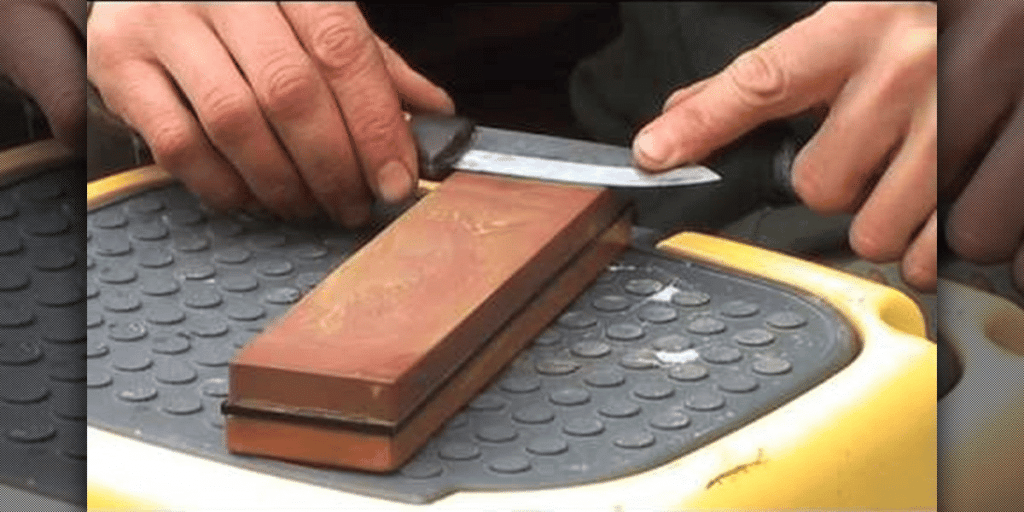
Looking at The Color
Examining the color of the stone can help determine which type of sharpening stone it is. Oil stones usually have an even color throughout, while water stones may have an uneven color or swirls. Oil stones are typically made from aluminum oxide or silicon carbide, which can affect the color, while water stones are usually made from other abrasive materials such as Novaculite. Here are some tips to help distinguish between the two:
- Look for a color different from the color of the blades or steel.
- Observe if the color is even or has swirls.
- Consider the type of abrasive material used to make the stone, such as aluminum oxide or silicon carbide.
Knowing the type of sharpening stone is essential for sharpening kitchen knives and other blades. Oil stones are a great choice if you want a low-maintenance and budget-friendly option, while water stones offer a faster sharpening speed and a wider range of grits.
Checking for an Abrasive Particle Type
Feeling the texture of the stone can help identify the abrasive particle type it contains. You can feel the difference between oil and water stones by running your fingers across the stone.
Oil stones contain aluminum oxide or silicon carbide abrasive material, while water stones typically have a wider range of grits such as aluminum oxide, silicon carbide, or Novaculite. This difference in abrasive material helps to create a sharp edge on the metal.
By taking the time to feel the texture of a stone, you can determine the type of abrasive particle it contains.
Testing the Stone with Water or Oil
Testing your stone with water or oil can help you identify its type quickly and easily. A simple test can tell you if your sharpening stone is an oil or water stone. For oil stones, apply a few drops of oil and spread it evenly across the surface. If the stone is water, add a few drops of water and observe the results.
| Water Stones | Oil Stones |
|---|---|
| Norton | Aluminum Oxide Stones |
| Rough Texture | Smoother Surface |
| Even Color | Uneven Color |
| Repel Oil | Absorb Water |
| Harder | Softer |
Remember to use the correct type of oil or water when testing your stone. Different brands have different types of stones, so make sure you use the right product. Keeping your stone in the best condition possible for optimal sharpening is important. With the right maintenance and care, your stone will provide you with a sharp edge for years.
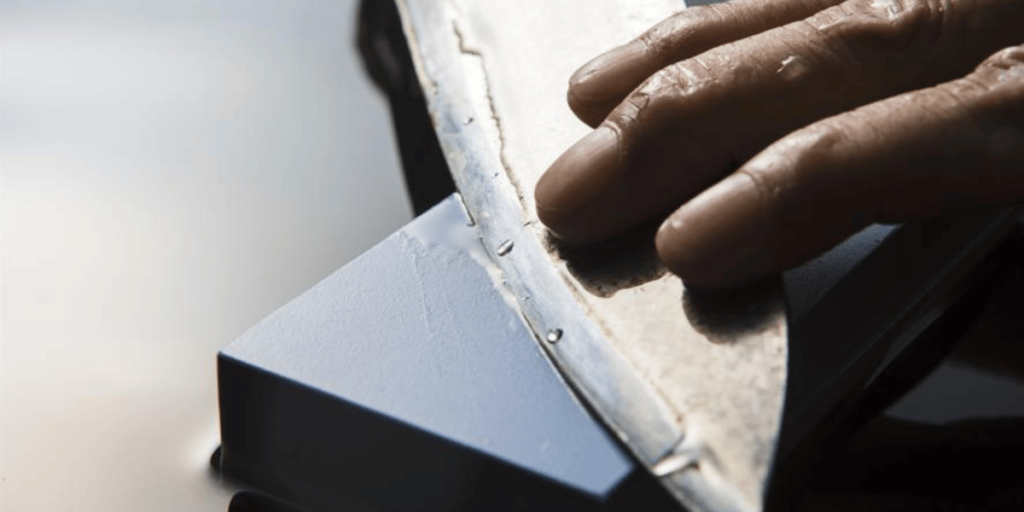
Frequently Asked Questions
What is the best sharpening stone for my needs?
The best sharpening stone for you depends on your preference and the tool you’re sharpening. Consider oil stones for low cost and maintenance or whetstones for faster sharpening and a wider grit range. Ask the manufacturer or seller to help you decide.
How often should I use a sharpening stone?
Sharpen your blades regularly, like sharpening a dull blade to a shining diamond. Use your sharpening stone frequently to keep your tools sharp and ready.
How do I sharpen a curved blade?
To sharpen a curved blade, use a sharpening stone in a circular motion to remove material gradually. Start with light pressure and work up for a smooth, even edge. Use water or oil, depending on the type of stone, and clean the blade after sharpening.
How can I restore an old sharpening stone?
Restore an old sharpening stone by cleaning it, applying oil or water, depending on the type, and flattening the surface with an abrasive material. Give it new life with a few simple steps!
What safety precautions should I take when using a sharpening stone?
Take safety precautions when using a sharpening stone, such as wearing protective gloves and eyewear. Ensure the stone is securely held and lubricated with water or oil, depending on its type. Keep your fingers and other body parts away from the blade.
